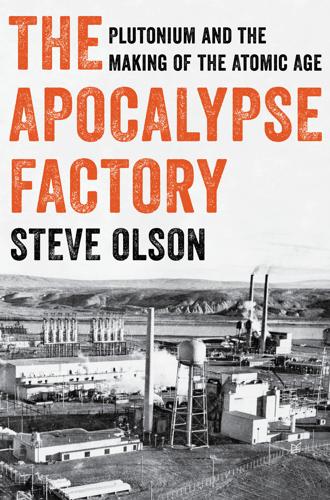
The Apocalypse Factory: Plutonium and the Making of the Atomic Age
by
Steve Olson
Published 28 Jul 2020
He later cited several sources as inspirations for the name, including part of a John Donne poem he admired: Batter my heart, three person’d God; for, you As yet but knocke, breathe, shine, and seeke to mend; That I may rise, and stand, o’erthrow mee, and bend Your force, to breake, blowe, burn and make me new. THROUGHOUT THE SPRING, as German opposition collapsed, Groves had been thinking about where to drop atomic bombs on Japan. As the Trinity test approached, the work to identify targets intensified. Groves had enlisted a committee of assistants, military men, and technical experts from Los Alamos to help him sort through the choices. Known as the Target Committee, the group held its first meeting on April 27 at the Pentagon and began laying out the criteria that potential targets must meet.
…
Not until August 1 did Groves forward Szilard’s memo to Stimson’s office. By then Stimson was caught up in other affairs and gave the petition no notice. It sat unread among the papers on his desk. ON FRIDAY, JULY 13—a date chosen by George Kistiakowsky in the hope that it would bring the project good luck—the scientists and engineers at the Trinity test site south of Los Alamos began the final assembly of the test device.* That afternoon, shortly after 3:00, working beneath the tower in the Jornada del Muerto desert, they removed a brass plug from the center of the assembly. At the very center of the high explosives was a cylindrical void about the size of a small fire extinguisher.
…
The news of the Nagasaki bombing just three days after Hiroshima, before the Japanese leaders had a chance to fully assess the damage and their options, was especially troubling. Like Seaborg, other Manhattan Project scientists expressed doubts about the second bombing, even if they supported the first. Physicist Samuel Allison, who had called out the countdown for the Trinity test, said a few weeks later, “When the second bomb was released, we felt it was a great tragedy.” All the members of the Scientific Advisory Panel, not just Oppenheimer, struggled with their feelings. Outwardly, Arthur Compton, the chair of the National Academy of Sciences committee that had recommended going forward with the project, did not betray ambivalence about the bombings, despite his religious convictions.

The Jasons: The Secret History of Science's Postwar Elite
by
Ann Finkbeiner
Published 26 Mar 2007
“Suddenly,…A new thing had just been born”: Ibid., 672. “a good shot from the bottle”: Fitch in Wilson, All in Our Time, 46. Enrico Fermi…equivalent to ten kilotons: “Trinity Test, July 16, 1945, Eyewitness Accounts—Enrico Fermi,” U.S. National Archives, Record Group 227, OSRD-S1 Committee, Box 82, Folder 6, “Trinity.” Online at http://www.dannen.com/decision/fermi.html. Luis Alvarez…saw the Trinity test from a B-29 at twenty-four thousand feet: “Trinity Test, July 16, 1945, Eyewitness Accounts—by Luis Alvarez,” online at http://www.dannen.com/decision/alvarez.html. Another physicist at the Radiation lab…“was to make sketches of the mushroom cloud”: Wolfgang Panofsky, e-mail to author, May 4, 2004.
…
Luis Alvarez was a physicist at the Berkeley Radiation Laboratory who had worked on radar—he invented the microwave early warning system and an airplane blind-landing system. Now, at Los Alamos, he worked on the bomb’s detonators. He saw the Trinity test from a B-29 at twenty-four thousand feet. Another physicist at the Radiation lab, Wolfgang Panofsky, called “Pief,” worked with Alvarez on devices to measure the bombs’ yields. Panofsky watched Trinity from the B-29 with Alvarez. They were trying to measure the explosion’s shock waves but were prevented by bad weather. “All we were able to do,” Panofsky said, “was to make sketches of the mushroom cloud.” Three weeks after the Trinity test, on August 6, 1945, the United States dropped a uranium bomb on Hiroshima, and on August 9 a plutonium bomb on Nagasaki.
…
In spite of being adamantly and publicly opposed to the proliferation of nuclear weapons and therefore of their tests, he thought that small tests might be necessary before the stockpile could be judged workable. The Jasons on the study included four non-Jasons who were nuclear weapons scientists from the three national weapons laboratories—Livermore, Los Alamos, and Sandia—and who had actually helped design the modern stockpile. By July 16, the fiftieth anniversary of the Trinity test, the Jasons had written the summary-and-conclusions section of a report called “Nuclear Testing.” They based the report, they wrote, “on understanding gained from 50 years of experience and analysis of more than 1000 nuclear tests.” The summary said that to learn anything useful about the long-term health of a nuclear weapon, you had to have a continuing program to test the weapon’s so-called primary stage.

The Man From the Future: The Visionary Life of John Von Neumann
by
Ananyo Bhattacharya
Published 6 Oct 2021
Otherwise, the risk that heavy fallout would rain down on populated areas was too great. Bainbridge worried that a stray lightning bolt might set off the bomb prematurely. At 2 a.m. on 16 July, amid lightning and 30-mile-an-hour winds, an enraged General Groves turned on the forecaster, Jack Hubbard, who had accepted the offer to become the Trinity test’s chief meteorologist just three months earlier. Hubbard reminded the fuming Groves that he had recommended the test be run either later than 18 July or earlier than 14 July. He then predicted the squall would abate by dawn, probably one of the more consequential weather forecasts in history. Promising to hang him if he was wrong, Groves shifted the time of the test from 4 a.m. to 5.30 a.m.
…
In the end, Truman sidled over to the Russian leader and told him that the United States now possessed a ‘new weapon of unusual destructive force’. Stalin, completely unperturbed, told him to make good use of it. Spies in the Manhattan Project had long ago told Stalin everything he needed to know. On the morning of the Trinity test, Little Boy had set sail for Tinian, a Japanese island, 1,500 miles from Tokyo, taken by American forces the previous summer. By 2 August, the parts for three Fat Man implosion bombs had arrived there too. One, unarmed, was dropped in the Pacific on 8 August – a final test. Another was readied for the next day.
…
Supporters in the press included William Laurence, science correspondent of the New York Times, who wanted the US to force the Soviets to accept nuclear disarmament. If that led to war, Laurence argued, ‘it would be to our advantage to have it while we are still the sole possessors of the atomic bomb’.60 Laurence had more reason than most to fear a nuclear attack on America. He was the only journalist to have been invited to witness the Trinity test and had seen the destructiveness of the atom bomb at first hand. Senior figures in the Truman and Eisenhower administrations pressed for nuclear strikes privately – and sometimes in public. Truman never seriously considered making an unprovoked attack on the Soviet Union, but Eisenhower did contemplate using atom bombs against China on several occasions during the 1950s.
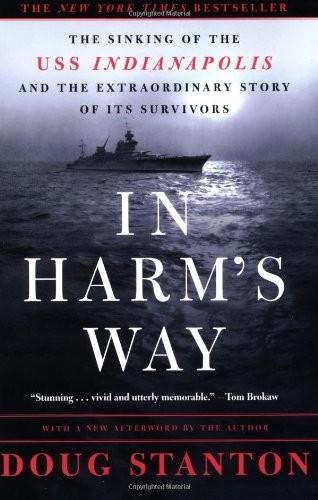
In Harm's Way: The Sinking of the U.S.S. Indianapolis and the Extraordinary Story of Its Survivors
by
Doug Stanton
Published 2 May 2003
One thousand miles to the east, on an expanse of scrubby desert in New Mexico, a tremendous flash filled the morning sky. It was an explosion of improbable magnitude, vaporizing the 100-foot tower from which it emanated. The searing blast turned the desert sand beneath it into glass. In high school textbooks, this moment would come to be known as the Trinity test; it was the first explosion of a nuclear device in the history of the world. The men aboard the Indianapolis knew nothing of this explosion. But shortly after the ship paused, a marine delivered a message by motor launch. It was presented to Dr. Haynes, who, as a senior medical officer of Admiral Spruance’s flagship staff, was authorized to open it.
…
Now, as the Indy began steaming for the open ocean, Truman was with Churchill in Potsdam, a suburb of Berlin. He was about to deliver the Potsdam Declaration to Japan: surrender, or be annihilated. Earlier, the USS Indianapolis had paused after leaving the wharf to await the test results of this instrument of annihilation; if it had failed, she would have been ordered back to the pier. But the Trinity test had succeeded, and, by 8:30 A.M. on July 16, 1945, Captain Charles Butler McVay had cleared the San Francisco harbor and was sailing to war. CHAPTER TWO Good-bye, Golden Gate Whenever the Indy sailed under the Golden Gate, we used to say, “Going out to sea was the worst of hell.” And coming back—that was the best of hell.
…
Lewis abandons ship activities of, before attack adrift and aftermath background of death dreams homecoming of and McVay court martial recovery of rescue of reunited with survivors Saturday Evening Post story by and secret cargo and shark attacks and ship orders Haynes, Margaret Helm, USS (destroyer) Henry, Lieutenant Commander Earl Hetz, Russell Hickman, Herbert Higgins boats (LCVPs) Hiroshima bomb dropped Hollandia, USS (transport ship) Homonhon Island Honshu island Hope, Bob Horner, Durward Hunters Point hypernatremia hypothermia I Idaho, USS (battleship) I-58 (Japanese submarine) attacks Indy equipment on McCoy shoots at Indianapolis, USS (cruiser) aftermath of rescue, for crew of arrives in Guam arrives in Hawaii arrives in Tinian with secret cargo attacked and sunk battle history of crew abandons crew background crew boards crew slang crosses international date line deep-sea search for gravesite of design and layout of distress signals (SOS) from engines on FDR travels on fire-control on first report of disaster food on guns and gunners on at Hunters Point Hunters Point departure inquiry into sinking of, and court martial investigation of court martial, of 1999 kamikaze attack on, at Okinawa leaves Guam on Peddie route to Leyte Leyte orders not delivered to McCormick lifesaving gear on loss of, finally noted by CINCPAC navigation equipment on nonarrival, and directive 10CL-45 nonarrival, not reported officers ordered to leave for war zone prepared for departure radar on radio drills on radio shacks on rescue operation for crew of rescuers identify secret cargo on board secret cargo delivered sonobuoy on speed of as Spruance flagship and staggered engine pattern submarine detection ability of survivors, number of survivors hallucinate seeing survivors’ organization and training in Chile and Trinity test Truman announces sinking of Unit Citation issued to crew watches on water problems on see also crew; rescue; survivors; and specific individuals intelligence reports declassified and inquiry McVay not informed of Iwo Jima Battle of J Jacobson, Commodore Jacob Janney, Commander John Japan Allied plan to defeat atom bombing banzai charges bombing of, in 1944 encrypting system invasion plans and Kublai Khan Pearl Harbor attack by sues for peace war in Pacific islands Japanese submarines intelligence on see also 1-58 Jaws (novel and film) Johnson, Captain Johnny “General Quarters,” Johnson, Joseph Johnston Island Joint Intelligence Staff, Office of Vice Chief of Naval Operations K kaiten (manned torpedo) kamikaze attack on Indy at Okinawa Kawasaki, Japan Kay, Gus Kemp, David Kimmel, Rear Admiral Husband King, Fleet Admiral Ernest Kirtland Army Air Force base Klappa, Ralph Kublai Khan Kurlick, George Kuryla, Coxswain Mike abandons ship adrift and aftermath rescued Kyushu island L Leeway Effect Lefkovitz, Ensign Irving Leyte Gulf Battle of (1944) Naval Operating Base Ships Present List Leyte island fails to send rescue party Indy’s orders to, not delivered properly and nonarrival of Indy receives distress signal Life Jacket Shark Repellent Compound Packet life rafts lifesaving gear life vests Lipski, Commander Stanley Liscombe Bay, USS (escort carrier) Little Boy (atom bomb) loran navigation Los Angeles Times M MacArthur, Gen.
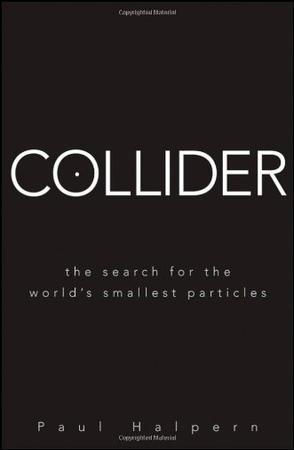
Collider
by
Paul Halpern
Published 3 Aug 2009
It’s true that in times of war, scientists have been recruited to conduct far, far riskier experiments. The expectation that war incurs horrific dangers makes that a completely different story. Those involved in the Manhattan Project, for example, knew that they were constructing and testing weapons of unmatched destructive power. In the Trinity test, in which the plutonium bomb was detonated for the first time in the aptly named region of New Mexico called Jornada del Muerto (Journey of the Dead Man), nobody knew for sure what would be the effect of a nuclear explosion. Would the blast be confined to that desert basin or would it race out of control and cause untold damage—perhaps even destroy the world?
…
Nothing stops us from making the conversion, however, and we determine that the nuclear explosion at Trinity was equivalent to 5.0 × 1020 TeV. That’s 5 followed by 20 zeroes—an enormous figure—something like the average number of stars in a billion galaxies. Thus, even the most rudimentary atomic bomb releases astronomically more energy than any of the particle collisions we’ve discussed. Only a few weeks after the Trinity test, bombs were dropped over Hiroshima and Nagasaki, leading to the devastation of those Japanese cities and the end of World War II. The dawn of the atomic age brought increased apprehension about the possibility that scientific miscalculation, combined perhaps with political blunders, would lead to Earth’s apocalyptic demise.
…
Interacting with ordinary matter, theoretically they might hasten certain GUT processes and induce protons to decay. Suppose this caused a chain reaction, causing proton after proton—and atom after atom—to disintegrate into other particles. Eventually, the whole world would be a lifeless orb of inhospitable decay products. Given the story of the Trinity test, such dire scenarios might lead us to believe that CERN researchers are now taking bets on the fate of Earth. Could LHC workers be wagering each lunchtime on whether black holes, strangelets, monopoles, or another bizarre creation will gobble up the French soil as if it were toast, bore holes through the Swiss mountains as if they were cheese, make haste toward Bologna, recklessly slice it up, and still not be satisfied?

Bomb Scare
by
Joseph Cirincione
Published 24 Dec 2011
But plutonium can be used in another design that uniformly compresses the material to achieve critical mass (as can uranium). This is a more complex design but allows for a smaller device, such as those used in today’s modern missile warheads. The implosion design was used in the first nuclear explosion, the Trinity test at Alamogordo, New Mexico, on July 16, 1945, and in the “Fat Man” nuclear bomb dropped on Nagasaki, Japan, on August 9, 1945. The implosion method of assembly involves a sphere of bomb material surrounded by a tamper layer and then a layer of carefully shaped plastic explosive charges. With exquisite microsecond timing, the explosives detonate, forming a uniform shock wave that compresses the material down to critical mass.
…
With exquisite microsecond timing, the explosives detonate, forming a uniform shock wave that compresses the material down to critical mass. A neutron emitter at the center of the device (usually a thin wafer of polonium that is squeezed together with a sheet of beryllium) starts the chain reaction. The Trinity test used about 6 kilograms of plutonium,16 but modern implosion devices use approximately 5 kilograms of plutonium or less—a sphere about the size of a plum.17 By Spring 1945 the Los Alamos scientists were franticly rushing to assemble what they called the “gadget” for the world’s first atomic test.
…
Norris, and Oleg A. Bukharin, Making the Russian Bomb: From Stalin to Yeltsin (Boulder, Colo.: Westview Press, 1995), p. 15. 11. Holloway, Stalin and the Bomb, 220. The U.S. project took four years and nine months, from October 1941, when Roosevelt decided to pursue the atomic bomb, to the July 1945 Trinity test. Russia took four years from the start of the full-scale industrial project in August 1945 to the test in August 1949. 12. From Sto sorok besed s Molotovym: iz dnevnika F. Chueva (Moscow: Terra, 1991), cited in David Holloway, Stalin and the Bomb, p. 164. 13. Conant to Stimson, January 22, 1947, Stimson Papers, box 154, folder 18, cited in Martin J.
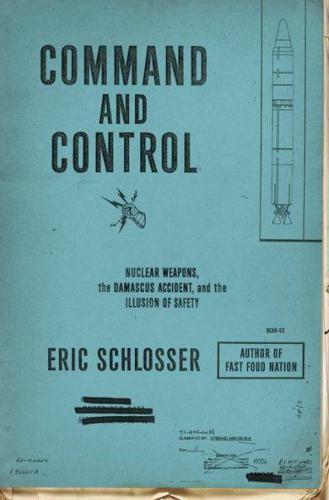
Command and Control: Nuclear Weapons, the Damascus Accident, and the Illusion ofSafety
by
Eric Schlosser
Published 16 Sep 2013
Kistiakowsky and his team at Los Alamos molded explosive charges into three-dimensional lenses, hoping to focus the shock wave, like the lens of a camera focuses light. Tons of explosives were routinely detonated in the hillsides of Los Alamos, as different lens configurations were tested. Kistiakowsky considered these lenses to be “precision devices,” not crude explosives. Each weighed between seventy and one hundred pounds. As the date of the Trinity test approached, he spent long hours at the lab with a dentist’s drill, eliminating the air bubbles in lenses and filling the holes with molten explosives. The slightest imperfection could distort the path of a shock wave. The final design was a sphere composed of thirty-two shaped charges—twelve pentagons and twenty hexagons.
…
In theory, the X-unit and the exploding bridgewires would set off thirty-two explosive lenses at once, creating the perfect shock wave and imploding the plutonium core. In reality, these new inventions were unpredictable. Cracked insulation frequently caused the detonators to short-circuit. When that happened, they didn’t work. And a week before the Trinity test, an X-unit fired prematurely during a lightning storm. It had been triggered by static electricity in the air. The misfire suggested that a nuclear weapon could be set off by a lightning bolt. At eighteen past three in the afternoon on July 13, 1945, the plutonium core was delivered to a steel tower a couple of miles from the McDonald Ranch House.
…
The device now looked like something concocted in a mad scientist’s laboratory—a six-foot-tall aluminum globe with a pair of large boxes, the X-units, attached to it and thirty-two thick electrical cables leaving each box, winding around the sphere, and entering evenly spaced holes on its surface. The Trinity test was scheduled for four in the morning on July 16, but forecasters predicted bad weather. Going ahead with the test could prove disastrous. In addition to the threat of lightning, high winds and rain could carry radioactive fallout as far as Amarillo, Texas, three hundred miles away. Postponing the test had other drawbacks: the device could be damaged by the rain, and President Harry S.
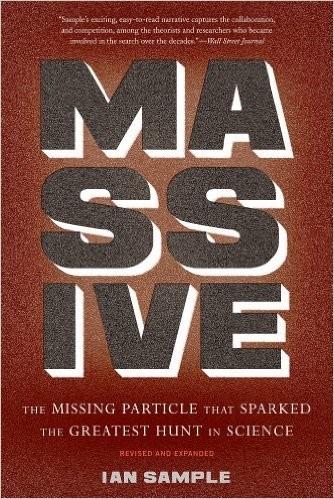
Massive: The Missing Particle That Sparked the Greatest Hunt in Science
by
Ian Sample
Published 1 Jan 2010
Their conclusions were comforting, but they also marked a point in history where scientists had to take seriously the possibility that the power to destroy the world was theirs to wield. That moment was on Marburger’s mind when the exchange of letters in Scientific American sparked a flurry of doomsday fears over particle colliders. “The analogy with the Trinity test concerns was on everyone’s mind,” he recalls. “I wish it had been on Frank’s mind when he wrote the response.” The Trinity test, on July 16, 1945, in the New Mexico desert, was the first demonstration of a nuclear weapon. The doomsday scenarios that scientists at Brookhaven and CERN considered seem outlandish. Destroying the planet in spectacular fashion isn’t a trivial thing to achieve, and doing so with a particle collider, a machine designed for a quite different purpose, is surely overwhelmingly unlikely.
…
The only comparable situation was in 1945, when the Manhattan Project scientists Emil Konopinski and Edward Teller had calculated the chances of nuclear bombs igniting the Earth’s atmosphere. They decided it was impossible, at least with the bombs they had to hand, though that didn’t stop Enrico Fermi from taking bets on whether the world would end when the first atom bomb was detonated on July 16 that year at the Trinity test site. The safety committees put together by Brookhaven National Laboratory and CERN looked at scenarios that had been dreamed up as potentially catastrophic for the planet. They included the accidental creation of dangerous strangelets (some varieties are thought to be entirely harmless); the production of a black hole that consumes the Earth in the blink of an eye; the creation of atom-destroying magnetic monopoles; and a profoundly terminal scenario known innocuously as “vacuum decay.”
…
Kent, Adrian Kepler, Johannes Keyworth, George background/description Reagan administration Khrushchev, Nikita Kibble, Tom Klein, Abraham Konigsberg, Jacobo Konopinski, Emil Konstantinidis, Nikos Krige, John Krumhansl, James Lagarrigue, Andre Landsberg, Greg Lath, Amit Lawrence, Ernest Lawrence, John Lederman, Leon background/personality Fermilab “God particle,” LHC SSC VBA (Very Big Accelerator) W/Z particles Lee, Ben Lee, Tsung-Dao Leptons Loch Ness monster risk analogy London, Jack quote Los Angeles Times Macmillan, Harold Maddox, John Magnetic monopoles Maiani, Luciano CERN’s finances LEP LHC Major, John Manhattan Project Marburger, John March-Russell, John Martin, William Mason, Stephen Mass concept binding forces and Newton and thirteenth/fourteenth centuries See also Higgs theory; specific individuals Mass origin broken symmetry and summing quarks/electrons and theory of superconductors See also Higgs theory; specific individuals Maxwell, James Clerk (Dafty) background electricity/magnetism unification fields concept impact of work Maxwell Society, King’s College May, Alan Nunn McDaniel, Boyce Meissner effect Melba, Dame Nellie Miller, David Miller, James Musset, Paul Mussolini, Benito Nambu, Yoichiro disagreements over work origin of mass and Nanopoulos, Dimitri National Accelerator Laboratory beginnings neutral current evidence/competition renaming Wilson and See also Fermilab Nature Negative energy Neutral currents about electroweak theory and handedness of nature and particle accelerator evidence supernovas and Neutrinos Neutrons New Scientist magazine New York Times Newton, Isaac background challenges to ideas electromagnetic waves laws of motion matter/mass concept Nielsen, Holger Ninomiya, Masao Nuclear disarmament Nuclear weapons doomsday scenario Hiroshima/Nagasaki bombings Manhattan Project spying and Trinity Test World War II years See also Campaign for Nuclear Disarmament (CND); specific individuals Nucleus of atom O’Leary, Hazel On the Origin of Species (Darwin) Oppenheimer, Robert Heisenberg’s conference Manhattan Project Princeton’s Institute for Advanced Study quantum mechanics problem Opticks (Newton) Particle accelerators during 1950s, energy ratings first “cyclotron accelerator,” history of development international work and mass/energy and mechanism descriptions medical uses neutral currents and speed of light and splitting the atom synchrocyclotrons beginnings U.S.
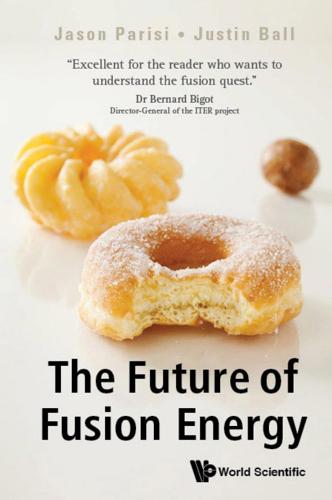
The Future of Fusion Energy
by
Jason Parisi
and
Justin Ball
Published 18 Dec 2018
This bomb, however, was different from all bombs before it. Instead of using the energy stored in chemical bonds, the “Trinity” test, as it is known, unleashed the energy stored in nuclear bonds. About 7 grams of plutonium disappeared instantaneously, generating the energy of more than 20,000 tons of TNT1 (see the “Yield of a nuclear weapon” Tech Box). While physicists and chemists had theorized about the possibility of a runaway fission reaction for over a decade, the Trinity test marked a discontinuity in human history — a transition from one state to another. No longer would humans be limited by the energy available in chemical bonds.
…
The energy released by all the conventional explosives during World War II was “just” 3 megatons. As human civilization’s transition into the atomic age accelerated, we created weapons that could level entire cities. On November 1, 1952, the first hydrogen bomb, Ivy Mike, was detonated, releasing 500 times as much energy as the Trinity test seven years earlier. Although Ivy Mike was intended as a conservative bomb design, it released roughly three times as much energy as all of the chemical explosives detonated throughout the entirety of World War II. Humanity now had the capacity to release several World War II’s worth of energy … in an instant.
…
After all, the reason that Sweden doesn’t attack Norway isn’t because it is too technically challenging to do covertly, it’s because they have no desire to. An equitable and prosperous world will be a peaceful one, regardless of the accessibility of neutron sources. 10.9Being a Role Model In the modern era, scientific knowledge cannot be unlearned, nor is it easily constrained. When the Trinity test was detonated on July 16, 1945, civilization underwent an irreversible transition. On that day, civilization itself become a force of nature with the capacity for conscious self-destruction. Then and always, the world must have this burden on its mind. However, nuclear energy has another side.
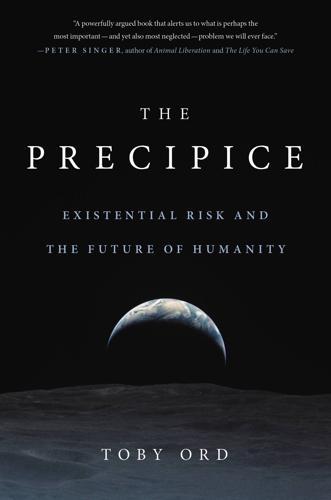
The Precipice: Existential Risk and the Future of Humanity
by
Toby Ord
Published 24 Mar 2020
Later, Oppenheimer commissioned a secret scientific report into the possibility of igniting the atmosphere.6 It supported Bethe’s conclusions that this didn’t seem possible, but could not prove its impossibility nor put a probability on it.7 Despite the report concluding that “the complexity of the argument and the absence of satisfactory experimental foundation makes further work on the subject highly desirable,” it was taken by the leadership at Los Alamos to be the final word on the matter. But concerns lingered among the physicists all the way through to the day of the Trinity test, when the first atomic bomb would be detonated.8 Enrico Fermi, the Nobel prize–winning physicist who was also present at the Berkeley meeting, remained concerned that deficiencies in their approximations or assumptions might have masked a true danger. He and Teller kept rechecking the analysis, right up until the day of the test.9 James Conant, President of Harvard University, took the possibility seriously enough that when the flash at detonation was so much longer and brighter than he expected, he was overcome with dread: “My instantaneous reaction was that something had gone wrong and that the thermal nuclear transformation of the atmosphere, once discussed as a possibility and jokingly referred to a few minutes earlier, had actually occurred.”10 The atmosphere did not ignite.
…
Suddenly, we were unleashing so much energy that we were creating temperatures unprecedented in Earth’s entire history. Our destructive potential had grown so high that for the first time the question of whether we might destroy all of humanity needed to be asked—and answered. So I date the beginning of the Precipice (our age of heightened risk) to 11:29 a.m. (UTC) on July 16, 1945: the precise moment of the Trinity test. Did humanity pass its own test? Did we successfully manage this first existential risk of our own making? Perhaps. I am genuinely impressed by Oppenheimer’s urgency and Compton’s stirring words. But I’m not convinced that the process they initiated was sufficient. Bethe’s calculations and the secret report were good, and were scrutinized by some of the world’s best physicists.
…
Given the weak conclusions of the report, the inability to get external review, and the continuing concerns of eminent scientists, there was a strong case for simply delaying, or abandoning, the test. Back at the time of the Berkeley meeting, many of the scientists were deeply afraid that Hitler might get there first and hold the world to nuclear ransom. But by the time of the Trinity test, Hitler was dead and Europe liberated. Japan was in retreat and there was no concern about losing the war. The risk was taken for the same reasons that the bombs would be dropped in Japan a month later: to shorten the war, to avoid loss of life in an invasion, to achieve more favorable surrender terms, and to warn the Soviet Union about America’s new-found might.
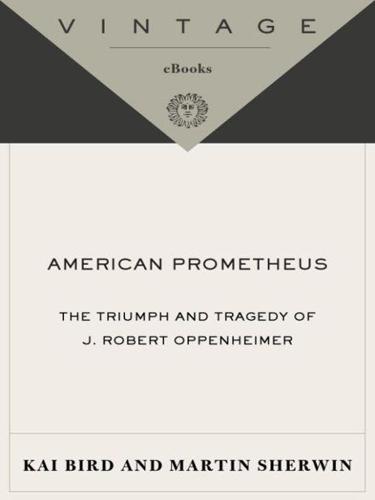
American Prometheus: The Triumph and Tragedy of J. Robert Oppenheimer
by
Kai Bird
and
Martin J. Sherwin
Published 18 Dec 2007
In the process, even someone with as lively a mind as Feynman’s was elated. But later he said of that moment, “You stop thinking, you know; you just stop.” Bob Wilson seemed to Feynman “[the] only one who was still thinking about it, at that moment.” But Feynman was wrong. Oppenheimer was thinking about it too. In the days after the Trinity test, his mood began to change. Everyone at Los Alamos eased off on the long hours spent in the lab. They knew that after Trinity, the gadget had become a weapon, and weapons were controlled by the military. Anne Wilson, Oppenheimer’s secretary, remembered a series of meetings with Army Air Force officers: “They were picking targets.”
…
Oppenheimer knew the names of the Japanese cities on the list of potential targets—and the knowledge was clearly sobering. “Robert got very still and ruminative, during that two-week period,” Wilson recalled, “partly because he knew what was about to happen, and partly because he knew what it meant.” One day soon after the Trinity test, Oppenheimer startled Wilson with a sad, even morose remark. “He was beginning to feel very down,” Wilson said. “I didn’t know of other people who were quite in the mood he was in, but he used to come from his house walking over to the Technical Area, and I used to come from the nurses’ quarters and somewhere along the way we often bumped into each other.
…
Don’t let it go up [higher] or the target won’t get as much damage.’ ” The atomic bombs that Oppenheimer had organized into existence were going to be used. But he told himself that they were going to be used in a manner that would not spark a postwar arms race with the Soviets. Shortly after the Trinity test, he had been relieved to hear from Vannevar Bush that the Interim Committee had unanimously accepted his recommendation that the Russians be clearly informed of the bomb and its impending use against Japan. He assumed that such forthright discussions were taking place at that very moment in Potsdam, where President Truman was meeting with Churchill and Stalin.
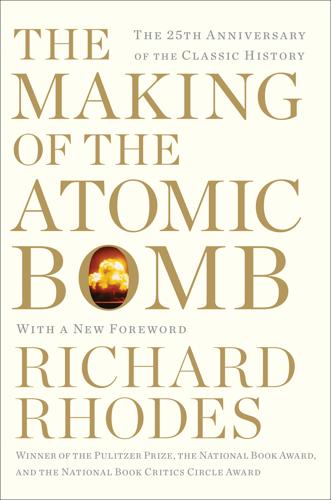
The Making of the Atomic Bomb
by
Richard Rhodes
Published 17 Sep 2012
Such bulldozing had worked in the gunpowder days now almost past but it would not work in the days of the bomb; that power would be big enough, as Oppenheimer’s estimates clarified, to make one nation alone a match for the world. The surprise of the morning was perhaps Marshall’s idea for an opening to Moscow: “He raised the question whether it might be desirable to invite two prominent Russian scientists to witness the [Trinity] test.” Groves must have winced; after the years of secrecy, after the thousands of numb man-hours of security work, that would be a renunciation worthy of Bohr himself. Byrnes had heard enough. He had sat behind Franklin Roosevelt at Yalta making notes. In all but the formalities he outranked even Henry Stimson.
…
As of July 9 Kistiakowsky did not yet have enough quality lens castings on hand to assemble a complete charge.2380 Oppenheimer further compounded his troubles by insisting on firing a Chinese copy of the gadget a few days before the Trinity shot to test its high-explosive design at full scale with a nonfissionable core. Each unit would require ninety-six blocks of explosive. Kistiakowsky resorted to heroic measures: In some desperation, I got hold of a dental drill and, not wishing to ask others to do an untried job, spent most of one night, the week before the Trinity test, drilling holes in some faulty castings so as to reach the air cavities indicated on our x-ray inspection films. That done, I filled the cavities by pouring molten explosive slurry into them, and thus made the castings acceptable. Overnight, enough castings were added to our stores by my labors to make more than two spheres.2381 “You don’t worry about it,” he adds fatalistically.2382 “I mean, if fifty pounds of explosives goes in your lap, you won’t know it.”
…
On the contrary new factors here tend to confirm it.”2500 Harrison also asked Stimson to alert him by July 25 “if [there is] any change in plans” because “[the] patient [is] progressing rapidly.”2501 At the same time Groves requested permission from George Marshall to brief Douglas MacArthur, who had not yet been told about the new weapon, in view of “the imminence of the use of the atomic fission bomb in operations against Japan, 5 to 10 August.”2502, 2503 The 509th had begun flying Pumpkin missions over Japan the previous day for combat experience and to accustom the enemy to small, unescorted flights of B-29’s at high altitude. Groves’ eyewitness narrative of the Trinity test had arrived that Saturday just before noon. Stimson sought out Truman and Byrnes and had the satisfaction of riveting them to their chairs by reading it aloud. Groves estimated “the energy generated to be in excess of the equivalent of 15,000 to 20,000 tons of TNT” and allowed his deputy, Thomas F.

Turing's Cathedral
by
George Dyson
Published 6 Mar 2012
“Well, it’s over,” he wrote to Klári the next morning. “How do you feel?” The cigarette situation improved, and the scientists kept working on the bomb. “Since May 3, inclusive, I am getting an average of about 2 packs of Luckies per day,” he reported to Klári on May 11. “Whadayasay?”37 The next six months brought intense activity: the Trinity test, Hiroshima, Nagasaki, the surrender of Japan, and, behind the scenes, the completion of the ENIAC, the first H-bomb calculations, and the launching of the computer project at the IAS. “This exposure to such a marvelous machine,” recalled Nicholas Metropolis, regarding his first visit to reconnoiter the ENIAC, “coupled in short order to the Alamogordo experience was so singular that it was difficult to attribute any reality to either.”
…
“Johnny gave the impression of operating sequentially by purely formal deductions,” Ulam noted, describing the difference between the two approaches as “something like the distinction between a mental picture of the physical chess board and mental picture of a sequence of moves on it written down in algebraic notation!”21 Monte Carlo, the best of both worlds, used von Neumann’s formal, computational system to capture Ulam’s intuitive, probabilistic approach. Ulam, who was not directly involved with the design or construction of the bomb, did not witness the Trinity test. “In the early morning the day the bomb went off we were at home and still in bed,” says Françoise. “Finally, a tired, pale, and badly shaken Johnny, who had been there with the VIPs, came to see us on his return.”22 Three weeks later, the second bomb was exploded, above Hiroshima, followed by Nagasaki on August 9.
…
“My perseverance was in considerable part, due to faith in the results which were wrong,” Teller explained, “but which were hopeful, and this carried us, at any rate, to a point where the necessity of a new development showed itself.”35 “It is likely that a super-bomb can be constructed and will work,” wrote Teller in a summary he personally inserted into the final report.36 The conference also produced a patent disclosure, filed jointly by von Neumann and British physicist (and Soviet agent) Klaus Fuchs, for the invention, on or about April 18, 1946, at Los Alamos, New Mexico, of a “proposed design for ‘Super’ ” described as “a device for initiating a thermo-nuclear reaction which employs a quantity of fissile material adaptable to sustain a neutron divergent chain reaction [and] a massive quantity of material in which a thermo-nuclear reaction can be maintained.”37 When Klaus Fuchs was revealed as a Soviet spy, von Neumann knew better than anyone else how much useful information had—and had not—been passed to the Soviet side. It would take Robert Richtmyer two years to model what had happened in the first microseconds of the Trinity test. Until there were better computers available, further progress was limited, even though, according to Carson Mark, who succeeded Richtmyer as director of T-Division, half of his group’s effort was devoted to the Super between 1946 and 1949. Von Neumann, impatient to get started, began writing code for the machine that did not yet exist.

On the Edge: The Art of Risking Everything
by
Nate Silver
Published 12 Aug 2024
Remember the whole point in this stuff is we want to reduce variance, not increase it.” That doesn’t mean Altman will play his hand as safely as the Kelly criterion would advise, which would never have you risk everything unless you were absolutely certain to win. (And remember, most working gamblers think the Kelly criterion is too risky.) But ever since the Trinity test in the Jornada del Muerto (Dead Man’s Journey) desert of New Mexico just before dawn on July 16, 1945—the culmination of the Manhattan Project, the detonation of a plutonium bomb, a test that some of the scientists feared had an outside chance of triggering a chain reaction and setting the Earth’s atmosphere on fire[*4]—humanity has lived with the possibility that it might destroy itself through its own technological advancements.
…
It had taken only twelve years between when the Hungarian physicist Leo Szilard conceived of the idea of a nuclear chain reaction while crossing the street on a rainy London evening—seeing “a way to the future, death into the world and all our woe, the shape of things to come”—and the successful Trinity test. This had happened in half the time. * * * Eliezer Yudkowsky thinks that we’re all going to die. “I’m sure we’re both familiar with Cromwell’s law about not assigning infinite probabilities to things that aren’t logical necessities,” he told me when we first spoke in August 2022, not long after I’d met with Altman.
…
And it provides further evidence that game theory is a robust concept—one that predicts human behavior well, which a lot of academic theories don’t. On the other hand, civilization has not survived for very long with the possibility of destroying itself. My still-very-much-alive parents were born before the Trinity test.[*16] And the risks may be increasing in our highly unstable world. Martin Hellman, a Stanford professor emeritus, estimated that the chances of a nuclear weapon being used had risen from 1 percent per year to 1 percent per month when I spoke to him in April 2022 not long after Russia’s invasion of Ukraine.
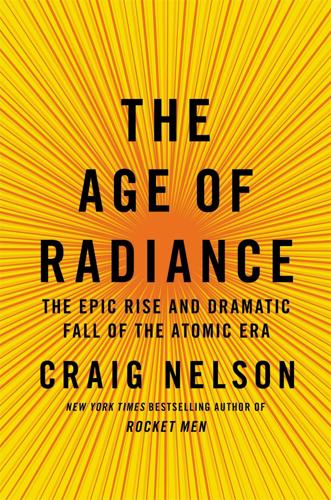
The Age of Radiance: The Epic Rise and Dramatic Fall of the Atomic Era
by
Craig Nelson
Published 25 Mar 2014
On February 16, 1945, Harry Gold told his superiors that Klaus Fuchs had determined what was needed for the Soviet atomic program to succeed, and by June the diminutive agent submitted “a description of the plutonium bomb, which had been designed and was soon planned to be tested at Alamogordo; a sketch of the bomb and its components with important dimensions indicated; the type of core; a description of the initiator; details as to the tamper”; and “the names of the types of explosives to be used in the bomb [information important to the design of high-explosive lenses]; the fact that the Trinity test explosion was to be made, with the approximate site indicated, soon, in July, 1945, and that this test was expected to establish that the atom bomb would produce an explosion vastly greater than TNT and the comparative estimated force of this explosion was indicated in detail with relation to TNT.”
…
At about this time I noticed a blue color surrounding the smoke cloud. Then someone shouted that we should observe the shock wave traveling along the ground. The appearance of this was a brightly lighted circular area, near the ground, slowly spreading out towards us. The color was yellow.” Hans Bethe: “Practically everybody at the Trinity test was a scientist except one person, a journalist with the New York Times by the name of William Laurence. We were quite far away, twenty kilometers on Compania Hill, so that long after the fireball, the shock wave followed and made a tremendous rumble. Laurence was terribly afraid and cried out, ‘WHAT WAS THAT?’
…
Stimson began by saying that he believed what they had to consider was not “a new weapon merely but as a revolutionary change in the relations of man to the universe.” Oppenheimer suggested, “If we were to offer to exchange information before the bomb was actually used, our moral position would be greatly strengthened,” and none other than General George Marshall agreed. Marshall said that at least two Russian scientists should be invited to the Trinity test. Secretary of State to-be Jimmy Byrnes aligned with Ernest Lawrence, arguing that if the Soviets were brought aboard, they would insist on a full partnership, and that instead America needed to play two cards at once, “to push ahead as fast as possible in production and research to make certain that we stay ahead and at the same time make every effort to better our political relations with Russia.”
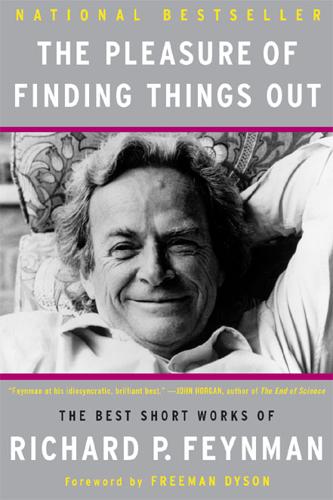
The Pleasure of Finding Things Out: The Best Short Works of Richard P. Feynman
by
Richard P. Feynman
and
Jeffrey Robbins
Published 1 Jan 1999
Then finally, a big ball of orange, the center that was so bright, became a ball of orange that started to rise and billow a little bit and get a little black around the edges and then you see it’s a big ball of smoke with flashes on the inside of the fire going out, the heat. I saw all that and all this that I just described in just a moment; took about one minute. It was a series from bright to dark and I had seen it. I am about the only guy that actually looked at the damn thing, the first Trinity Test. Everybody else had dark glasses. The people at six miles couldn’t see it because they were all told to lie on the floor with their eyes covered, so nobody saw it. The guys up where I was all had dark glasses. I’m the only guy who saw it with the human eye. Finally, after about a minute and a half, there’s suddenly a tremendous noise, BANG, and then rumble, like thunder, and that’s what convinced me.
…
See also Computers Superstition, 103 Teaching, 106, 113, 242 ideas vs. definitions, 179 See also Education; under Science Teller, Edward, 60, 70–71 Thought control, 98 Thoughts as visual, 217 Time-binding, 185, 188 Time sense, 218, 219 Tolman, 55, 56 Tomonaga, Sin-Itiro, xi, 11(n), 12, 189–190, 191, 196, 197 Transistors, 33, 35, 47 and Brownian motion, 38–39 energy used in, 36–37 of three or four atoms, 42–44 Tricks, 71 Trinity Test. See Los Alamos, Alamogordo test Tukey, John, 221–222 Turbulence, 202 UFO’s, 206 Ulam, Stanislaw, 191 Ullian, Louis J., 153 Ultimate particles, 192–193, 199, 238 Uncertainty, 24–25, 104, 111–112, 115, 146, 247–249, 250, 252, 254, 256 and O-rings on Challenger, 157 See also Doubt Uncertainty principle, 50 Understanding nature, 13–14, 15, 23, 102, 108, 110, 148, 182, 198, 204, 240, 241 imitating nature, 47 Uniforms, 7–8, 13 Universality, 101 Universe without man, 250 Uranium, 70, 74, 94 separating isotopes of, 54, 55, 56, 71–72, 231 uranium nitrate, 72 uranium 235, 71–72, 231 Urey, Harold, 55 Vacuum, 118 Van der Waals forces, 134–135, 134(n) Virtual particles, 191 Viruses, 227 Voltage, 228.

New Dark Age: Technology and the End of the Future
by
James Bridle
Published 18 Jun 2018
In 1945, he came across a mimeograph entitled ‘Outline of Weather Proposal’, written by a researcher at RCA Laboratories named Vladimir Zworykin. Von Neumann had spent the war consulting for the Manhattan Project, making frequent trips to the secret laboratory at Los Alamos in New Mexico and witnessing the first atomic bomb blast, code-named Trinity, in July 1945. He was the main proponent of the implosion method used in the Trinity test and the Fat Man bomb dropped on Nagasaki, and helped design the critical lenses that focused the explosion. Zworykin, like Vannevar Bush, had recognised that the information-gathering and retrieval abilities of new computing equipment, together with modern systems of electronic communication, allowed for the simultaneous analysis of vast amounts of data.
…
(von Neumann), 28 Capital in the Twenty-First Century (Piketty), 112 carbon dioxide, 75 Catch-22 (Heller), 187–8 ‘cautious regulator’ theory, 94–5 CCTV, 181–2 centaur chess, 159 Chanarin, Oliver, 143 chaotic storage, 115–6 Chargaff, Erwin, 96–7 Charlie Hebdo attacks, 212 chemtrails, 192–5, 206–8, 214 children’s television, 216–7 children’s YouTube, 219, 238 Cirrus homogenitus, 196, 197 Civil Aviation Authority (CAA), 161–2 clear-air turbulence, 68 climate carbon dioxide, 75 global warming, 73, 193, 214 permafrost, 47–9, 56–7 seed banks, 52–6 turbulence, 65–9 climate change patterns disrupted by, 72–3 resilience against, 59 climate crisis, 56 Clinton, Bill, 243 Clinton, Hillary, 207, 232–3 cloning, 86–8 closed-circuit television, 181–2 cloud(s), 6–7, 8, 17, 195–6 ‘The Cloud Begins with Coal-Big Data, Big Networks, Big Infrastructure, and Big Power’ report, 64 ‘The Cloud of Unknowing,’ 9 cloudy thinking, 9 coal deposits, discovery of, 52 coastal installations, 62 Cocks, Clifford, 167 code/spaces, 37–9 code words, 175 cognition about, 135–6 artificial intelligence (AI), 139 facial recognition, 141 image recognition, 139–40 machine translation, 147 ‘predictive policing’ systems, 144–6 collectivism, totalitarianism vs., 139 Commission on Government Secrecy, 169 complex systems about, 2–3 aggregation of, 40 high-frequency trading, 14, 106–7, 108, 122, 124 complicity computational logic, 184–5 Freedom of Information, 161–2, 165, 192 global mass surveillance, 179–80 Glomar response, 165, 186 public key cryptography, 167–8 computation calculating machines, 27 Electronic Numerical Integrator and Computer (ENIAC), 27, 27–30, 33 flight trackers, 35–6, 36 IBM Selective Sequence Electronic Calculator (SSEC), 30, 30–2, 31, 146 opaqueness of, 40 computational logic, 184–5 computational thinking about, 4 evolution of, 248 importance of, 44–5 Concorde, 69, 70, 71 conspiracy chemtrails, 192–5, 206–8, 214 conspiracy theories, 195, 198–9, 205 contrails, 196–8, 197, 214 global warming, 73, 193, 214 9/11 terrorist attacks, 203–4, 206 ‘Conspiracy as Governance’ (Assange), 183 contrails, 196–8, 197, 214 Copenhagen Climate Change Conference (COP15), 199 Cowen, Deborah, 132 Credit Suisse, 109 cryptocurrency, 63 Cumulus homogenitus, 195–6 cyborg chess, 159 D Dabiq (online magazine), 212 Dallaire, Roméo, 243 darkness, 11–2 “Darkness” (poem), 201–2 dark pools, 108–9 DARPA (Defense Advanced Research Projects Agency), 33 Darwin, Charles, 78 data abundance of, 83–4, 131 big, 84 importance of, 245–6 realistic accounting of, 247 thirst for, 246 data dredging, 90–1 Debord, Guy, 103 DEC (Digital Equipment Corporation), 33 Decyben SAS, 110 Deep Blue, 148–9, 157–60 DeepDream, 153, 154–5 DeepFace software, 140 defeat devices, 120 Defense Advanced Research Projects Agency (DARPA), 33 de Solla Price, Derek, 91–2, 93 Diffie-Hellman key exchange, 167 digital culture, 64–5 Digital Equipment Corporation (DEC), 33 digital networks, mapping, 104 digitisation, 108 ‘Discussion of the Possibility of Weather Control’ lecture, 26 diurnal temperature range (DTR), 204 DNA sequencing, 93 D-Notices, 179 domain name system, 79 doomsday vault, 52–3 Dow Jones Industrial Average, 121–2 drones, 161–2 drug discovery/research, 94–5 DTR (diurnal temperature range), 204 Duffy, Carol Ann, 201 Dunne, Carey, 194–5 E Elberling, Bo, 57 electromagnetic networks, 104 Electronic Computer Project, 27 Electronic Frontier Foundation, 177 Electronic Numerical Integrator and Computer (ENIAC), 27, 27–30, 33 Elements of Chemistry (Lavoisier), 208–9 Elkins, Caroline, 183–4 Ellis, James, 167 encoded biases, 142 ‘End of Theory’ (Anderson), 83–4, 146 Engelbart, Douglas, 79 ENIAC (Electronic Numerical Integrator and Computer), 27, 27–30, 33 Enlightenment, 10 Environmental Protection Agency (EPA), 119–20 EPA (Environmental Protection Agency), 119–20 Epagogix, 130 epidemic type aftershock sequence (ETAS) model, 145–6 Epimetheus, 132–4 Equinix LD4, 104 Eroom’s law, 86, 93–6 ETAS (epidemic type aftershock sequence) model, 145–6 Euronext Data Center, 104, 105, 106 Evangelismos Hospital, 130–1 evolution, theory of, 78 exploitation, 229–30 Eyjafjallajökull, eruption of, 200–1, 202 F Facebook, 39–40, 156–7 facial recognition, 141 Fairchild Semiconductor, 80 Farage, Nigel, 194 Fat Man bomb, 25 Fermi, Enrico, 250 Ferranti Mark I, 78 fiat anima, 19–20 fiat lux, 19–20 Finger Family, 221–2, 224, 227 ‘Five Eyes,’ 174 Flash Boys (Lewis), 111–2 flash crash, 121–2, 130–1 FlightRadar24, 36, 189, 191 flight trackers, 35–6, 36 ‘Fourteen Eyes,’ 174 Fowler, R.H., 45 Frankenstein (Shelley), 201 fraud, 86–8, 91 Freedom of Information, 161–2, 165, 192 Friends’ Ambulance Unit, 20 Fuller, Buckminster, 71 Futurama exhibit, 30–1 ‘Future Uses of High Speed Computing in Meteorology’ lecture, 26 G Gail, William B., 72–3 Galton, Francis, 140 game developers, 130 Gates’s law, 83 GCHQ (Government Communications Headquarters), 167, 174, 176–9, 189 genocide, 243 ghost cars (Uber), 118–9 G-INFO, 190 global mass surveillance, 179–80 Global Positioning System (GPS), 36–7, 42–3 Global Seed Vault, 54 global warming, 73, 193, 214 Glomar response, 165, 186 Godard, Jean-Luc, 143 Google, 84, 139, 230, 242 Google Alerts, 190 Google Brain project, 139, 148, 149, 156 Google Earth, 35–6 Google Home, 128–9 Google Maps, 177 Google Translate, 147–8, 156 Government Communications Headquarters (GCHQ), 167, 174, 176–9, 189 GPS (Global Positioning System), 36–7, 42–3 Graves, Robert, 159 Gravity’s Rainbow (Pynchon), 128 gray zone, 212–4 Great Nōbi Earthquake, 145 Greenland, 57–8 Green Revolution, 53 Greyball programme, 119, 120 guardianship, 251–2 H Hankins, Thomas, 102 Haraway, Donna, 12 Harvard Mark I machine, 30 Hayek, Friedrich, 156–7 The Road to Serfdom, 139 The Sensory Order: An Inquiry into the Foundations of Theoretical Psychology, 138–9 HealthyFoodHouse.com (website), 231–2 Heller, Joseph Catch-22, 187–8 Hermes, 134 Hersh, Seymour, 164 Hewlett-Packard, 143 hidden technological processes, 120 high-frequency trading, 14, 106–7, 108, 122, 124 high-throughput screening (HTS), 95–6 Hillingdon Hospital, 110–1, 111 Hippo programme, 32 Hofstadter, Douglas, 205–6 Hola Massacre, 170 homogenitus, 195, 196 Horn, Roni, 50, 201 How-Old.net facial recognition programme, 141 ‘How the World Wide Web Just Happened’ lecture, 78 HTS (high-throughput screening), 95–6 Hughes, Howard, 163 Hughes Glomar Explorer, 163–5 human genome project, 93 Human Interference Task Force, 251 human violence, 202 Humby, Clive, 245, 246 Hwang Woo-suk, 86–8 hyperobjects, 73, 75, 76, 194 hypertext, 79 I IBM Selective Sequence Electronic Calculator (SSEC), 30, 30–2, 31, 146 ICAO (International Civil Aviation Organisation), 68 ICARDA (International Center for Agricultural Research in the Dry Areas), 53–4, 55 ICT, 60–2 image recognition, 139–40 Infinite Fun Space, 149–50, 156 information networks, 62 information superhighway, 10 Infowars (Jones), 207 In Place of Fear (Bevan), 110 Institute of the Aeronautical Sciences, 26 integrated circuits, 79, 80 Intel, 80 International Center for Agricultural Research in the Dry Areas (ICARDA), 53–4, 55 International Civil Aviation Organisation (ICAO), 68 International Cloud Atlas, 195 Internet Research Agency, 235, 237 Inuit Knowledge and Climate Change, 199 The Invisibles (Morrison), 196–7 Isaksen, Ketil, 54 ISIL, 212–3 J Jameson, Fredric, 205 Jelinek, Frederick, 146–7 Jones, Alex Infowars, 207 Joshi, Manoj, 68–9 journalism, automated, 123–4 just-in-time manufacturing, 117 K K-129, 162–3 Karma Police operation, 175 Kasparov, Garry, 148–9, 157–8 Keeling Curve, 74, 74 Kennedy, John F., 169–70 Kinder Eggs, 215–6 Kiva robots, 114 Klein, Mark, 176–7 Kodak, 143 Krakatoa, eruption of, 202 Kunuk, Zacharias, 199, 200 Kuznets curve, 113 L Large Hadron Collider, 93 Lavoisier, Antoine, 78 Elements of Chemistry, 208–9 Lawson, Robert, 175–6 LD4, 104, 105 Leave Campaign, 194 Leibniz, Gottfried Wilhelm, 78 Levy, David, 158, 159 Lewis, Michael Flash Boys, 111–2 LifeSphere, 125 literacy in systems, 3–4 Lockheed Ocean Systems, 163 Logan, Walt (pseudonym), 165 Lombroso, Cesare, 140 London Stock Exchange, 110–1 Lovecraft, H.P., 11, 249 ‘low-hanging fruit,’ 93–4 M Macedonia, 233–4 machine learning algorithms, 222 machine thought, 146 machine translation, 147 magnetism, 77 Malaysian Airlines, 66 manganese noodles, 163–4 Manhattan Project, 24–30, 248 Mara, Jane Muthoni, 170 Mark I Perceptron, 136–8, 137 Maslow’s hierarchy of needs, 128–9 Matthews, James Tilly, 208–10, 209 Mauro, Ian, 199 McCarthy, Joe, 205 McGovern, Thomas, 57–8 McKay Brothers, 107, 110 memex, 24 Mercer, Robert, 236 Merkel, Angela, 174 metalanguage, 3, 5 middens, 56 migrated archive, 170–1 Minds, 150 miniaturisation principle, 81 Mirai, 129 mobile phones, 126 The Modern Prometheus (Shelley), 201 monoculture, 55–6 Moore, Gordon, 80, 80, 83 Moore’s law, 80–3, 92–4 Mordvintsev, Alexander, 154 Morgellons, 211, 214 Morrison, Grant The Invisibles, 196–7 Morton, Timothy, 73, 194 Mount Tambora, eruption of, 201 Moynihan, Daniel Patrick, 169 Munch, Edvard The Scream, 202 Mutua, Ndiku, 170 N NarusInsight, 177 NASA Ames Advanced Concepts Flight Simulator, 42 Natanz Nuclear Facility, 129 National Centre for Atmospheric Science, 68–9 National Geospatial-Intelligence Agency, 243 National Health Service (NHS), 110 National Mining Association, 64 National Reconnaissance Office, 168, 243 National Security Agency (NSA), 167, 174, 177–8, 183, 242–3, 249–50 National Security Strategy, 59 natural gas, 48 neoliberalism, 138–9 network, 5, 9 networks, 249 Newton, Isaac, 78 NewYorkTimesPolitics.com, 221 New York World’s Fair, 30–1 NHS (National Health Service), 110 9/11 terrorist attacks, 203–4, 206 ‘Nine Eyes,’ 174 1984 (Orwell), 242 NORAD (North American Air Defense Command), 33 North American Air Defense Command (NORAD), 33 ‘The Nor’ project, 104 Not Aviation, 190–1 NSA (National Security Agency), 167, 174, 177–8, 183, 242–3, 249–50 nuclear fusion, 97–8, 100 nuclear warfare, 28 Numerical Prediction (Richardson), 45 Nyingi, Wambugu Wa, 170 Nzili, Paulo Muoka, 170 O Obama, Barack, 180, 206, 231 Official Secrets Act, 189 Omori, Fusakichi, 145 Omori’s Law, 145 Operation Castle, 97 Operation Legacy, 171–2 Optic Nerve programme, 174 Optometrist Algorithm, 99–101, 160 O’Reilly, James, 185–6 Orwell, George 1984, 242 ‘Outline of Weather Proposal’ (Zworykin), 25–6 P Paglen, Trevor, 144 ‘paranoid style,’ 205–6 Patriot Act, 178 Penrose, Roger, 20 Perceptron, 136–8, 137 permafrost, 47–9, 56–7 p-hacking, 89–91 Phillippi, Harriet Ann, 165 photophone, 19–20 Pichai, Sundar, 139 Piketty, Thomas Capital in the Twenty-First Century, 112 Pincher, Chapman, 175–6 Pitt, William, 208 Plague-Cloud, 195, 202 Poitras, Laura, 175 Polaroid, 143 ‘predictive policing’ systems, 144–6 PredPol software, 144, 146 Priestley, Joseph, 78, 208, 209 prion diseases, 50, 50–1 PRISM operation, 173 product spam, 125–6 Project Echelon, 190 Prometheus, 132–4, 198 psychogeography, 103 public key cryptography, 167–8 pure language, 156 Putin, Vladimir, 235 Pynchon, Thomas Gravity’s Rainbow, 128 Q Qajaa, 56, 57 quality control failure of, 92–3 in science, 91 Quidsi, 113–4 R racial profiling, 143–4 racism, 143–4 ‘radiation cats,’ 251 raw computing, 82–3 Reagan, Ronald, 36–7 Reed, Harry, 29 refractive index of the atmosphere, 62 Regin malware, 175 replicability, 88–9 Reproducibility Project, 89 resistance, modes of, 120 Reuter, Paul, 107 Review Group on Intelligence and Communications Technologies, 181 Richardson, Lewis Fry, 20–1, 29, 68 Numerical Prediction, 45 Weather Prediction by Numerical Process, 21–3 Richardson number, 68 The Road to Serfdom (Hayek), 139 Robinson, Kim Stanley Aurora, 128 robots, workers vs., 116 ‘Rogeting,’ 88 Romney, Mitt, 206–7 Rosenblatt, Frank, 137 Roy, Arundhati, 250 Royal Aircraft Establishment, 188–9 Ruskin, John, 17–20, 195, 202 Rwanda, 243, 244, 245 S Sabetta, 48 SABRE (Semi-Automated Business Research Environment), 35, 38 SAGE (Semi-Automatic Ground Environment), 33, 34, 35 Samsung, 127 Scheele, Carl Wilhelm, 78 Schmidt, Eric, 241–5 The Scream (Munch), 202 Sedol, Lee, 149, 157–8 seed banks, 52–6 Seed Vault, 55 seismic sensors, 48 self-excitation, 145 ‘semantic analyser,’ 177 Semi-Automated Business Research Environment (SABRE), 35, 38 Semi-Automatic Ground Environment (SAGE), 33, 34, 35 semiconductors, 82 The Sensory Order: An Inquiry into the Foundations of Theoretical Psychology (Hayek), 138–9 Shelley, Mary Frankenstein, 201 The Modern Prometheus, 201 SIGINT Seniors Europe, 174 simulation, conflating approximation with, 34–5 Singapore Exchange, 122–3 smart products, 127–8, 131 Smith, Robert Elliott, 152 smoking gun, 183–4, 186 Snowden, Edward, 173–5, 178 software about, 82–3 AlphaGo, 149, 156–8 Assistant, 152 AutoAwesome, 152 DeepFace, 140 Greyball programme, 119, 120 Hippo programme, 32 How-Old.net facial recognition programme, 141 Optic Nerve programme, 174 PredPol, 144, 146 Translate, 146 Solnit, Rebecca, 11–2 solutionism, 4 space telescopes, 168–9 speed of light, 107 Spread Networks, 107 SSEC (IBM Selective Sequence Electronic Calculator), 30, 30–2, 31, 146 Stapel, Diederik, 87–8 Stapledon, Olaf, 20 steam engines, 77 Stellar Wind, 176 Stewart, Elizabeth ‘Betsy,’ 30–1, 31 Steyerl, Hito, 126 stock exchanges, 108 ‘The Storm-Cloud of the Nineteenth Century’ lecture series, 17–9 Stratus homogenitus, 195–6 studios, 130 Stuxnet, 129–30 surveillance about, 243–4 complicity in, 185 computational excesses of, 180–1 devices for, 104 Svalbard archipelago, 51–2, 54 Svalbard Global Seed Vault, 52–3 Svalbard Treaty (1920), 52 Swiss National Bank, 123 Syed, Omar, 158–9 systemic literacy, 5–6 T Taimyr Peninsula, 47–8 Targeted Individuals, 210–1 The Task of the Translator (Benjamin), 147, 155–6 TCP (Transmission Control Protocol), 79 technology acceleration of, 2 complex, 2–3 opacity of, 119 Teletubbies, 217 television, children’s, 216–7 Tesco Clubcard, 245 thalidomide, 95 Thatcher, Margaret, 177 theory of evolution, 78 thermal power plants, 196 Three Guineas (Woolf), 12 Three Laws of Robotics (Asimov), 157 Tillmans, Wolfgang, 71 tools, 13–4 To Photograph the Details of a Dark Horse in Low Light exhibition, 143 totalitarianism, collectivism vs., 139 Toy Freaks, 225–6 transistors, 79, 80 Translate software, 146 translation algorithms, 84 Transmission Control Protocol (TCP), 79 Tri Alpha Energy, 98–101 Trinity test, 25 trolling, 231 Trump, Donald, 169–70, 194–5, 206, 207, 236 trust, science and, 91 trusted source, 220 Tuktoyaktuk Peninsula, 49 turbulence, 65–9 tyranny of techne, 132 U Uber, 117–9, 127 UberEats app, 120–1 unboxing videos, 216, 219 United Airlines, 66–7 Uniting and Strengthening America by Fulfilling Rights and Ending Eavesdropping, Dragnet-collection and Online Monitoring Act (USA FREEDOM Act), 178 USA FREEDOM Act (2015), 178 US Drug Efficacy Amendment (1962), 95 V van Helden, Albert, 102 Veles, objectification of, 235 Verizon, 173 VHF omnidirectional radio range (VOR) installations, 104 Vigilant Telecom, 110–1 Volkswagen, 119–20 von Neumann, John about, 25 ‘Can We Survive Technology?

Genius: The Life and Science of Richard Feynman
by
James Gleick
Published 1 Jan 1992
Richard and Arline : left , at Presbyterian Sanatorium. At Los Alamos: “I opened the safes which contained behind them the entire secret of the atomic bomb…” Slouching beside J. Robert Oppenheimer at a Los Alamos meeting: “He is by all odds the most brilliant young physicist here, and everyone knows this.” Awaiting the Trinity test: “And we scientists are clever-too clever- care you not satisfied? Is four square miles in one bomb not enough? Men are still thinking. Just tell us how big you want it !” I. I. Rabi (left) and Han s Bethe: Physicists are the Peter Pans of the human race, Rabi said. At th e Shelter Island Conference , June 1947: Willis Lamb and John Wheeler , standing; Abraham Pais, Feynrnan, and Herman Feshbach, seated; Julian Schwinger, kneeling.
…
Also declassified is Feynman’s manuscript for the account of the theoretical-physics division in what became the Smyth report, Atomic Energy for Military Purposes, and a related correspondence between Smyth, Oppenheimer, and Groves. Mary D. Lee had preserved a copy of Feynman’s 9 August 1945 letter to his mother, describing the Trinity test. Feynman had saved Arline’s personal papers, including their correspondence, her correspondence with her family, and other items. Much has been written about the Manhattan Project and the scientists who participated in it. Still, one or two things may remain to be said. Many individual memoirs are available.
…
See also Los Alamos Bethe-Feynman formula, 6, 168 chain reaction, 161–63, 172–73, 197 computation, 175–82, 201 dragon experiment, 196 effect on physics, 4, 203, 207–11, 216, 232, 294–95, 376, 431 guilt over, 3, 156, 203, 207–9, 213, 263–64 Hiroshima, 156, 203–4, 210, 218, 237, 263 isotron project, 139–45 Nagasaki, 156, 203, 210 official history, 164 origins of, 95, 136, 139 postwar consequences of, 156, 207–11, 213, 218, 233, 278, 294–95, 340, 431 practical difficulties, 163–65, 170–73, 181 predetonation, 6, 168–69 radioactivity, 197–99 Russian, 278, 297–98 space travel and, 218–19 theorists’ role, 155, 163–65, 173–74, 181 Trinity test, 6, 65–66, 153–57, 203 atomic energy, 218, 339 Atomic Energy Commission, 209, 211, 277, 295–96 AT&T Bell Laboratories, see Bell Telephone Laboratories Auden, W. H., 7–8 aurora borealis, 27, 436, 437 Baade, Walter, 293 Baba Ram Das, see Alpert, Richard Babbage, Charles, 180 Bacher, Robert F., 210–11, 277–78, 338 Bacon, Francis, 429 Bacon, Roger, 68, 314 bacteria, 349–51 Bader, Abram, 60–61, 362 Bainbridge, Kenneth, 155 Barber, Edwin, 411 n Bardeen, John, 303 Barschall, Heinz, 96 Bartkey, Walter, 293 Baudelaire, Charles-Pierre, 318 Bayside Cemetery (New York), 26, 220–21 Beethoven, Ludwig van, 318 Beggs, James, 421, 427 Bell, Alexander Graham, 40, 319 Bell, Mary Louise (second wife), 287, 291–94 Bell Telephone Laboratories, 85, 137–38, 182, 354 Bergman, Ingrid, 223 Bernal, J.
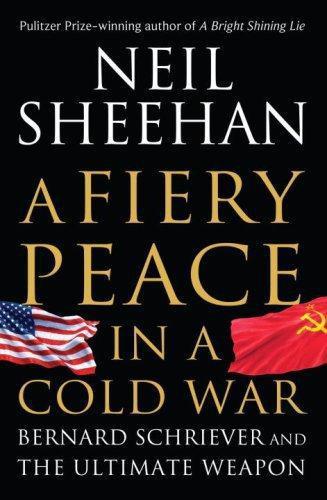
A Fiery Peace in a Cold War: Bernard Schriever and the Ultimate Weapon
by
Neil Sheehan
Published 21 Sep 2009
That July 24, at the last Big Three conference in the Berlin suburb of Potsdam, Truman, exultant at Groves’s awesome description of the Trinity test, had approached Stalin with contrived casualness as the Soviet dictator was leaving the conference room. Truman had said that the United States “had a new weapon of unusual destructive force.” Stalin had simply nodded his thanks and left the room. Truman and Churchill decided that Stalin had not understood. They were wrong. Stalin was well briefed on the Manhattan Project. The latest yield of Soviet espionage, a memorandum he had apparently received a couple of weeks before, had informed him, among other things, that the Trinity test was imminent. Soviet intelligence had thoroughly penetrated the Manhattan Project.
…
The concept was simple; designing and executing it was extremely complicated. The Soviets were to face the same shortage of uranium for the same reason—they had also not yet located and developed mining of natural uranium deposits in Siberia. To create an arsenal instead of just one bomb, they would have to employ plutonium for the cores. And later, after the Trinity test and the dropping of the bombs on Hiroshima and Nagasaki, it was determined there was a second reason to use plutonium. Once the implosion method was mastered, the plutonium weapon yielded considerably greater nuclear force and devastation than the gun type with U-235. The Little Boy bomb that destroyed Hiroshima loosed a nuclear blast equivalent to 12.5 kilotons, or 12,500 tons, of TNT.

Maths on the Back of an Envelope: Clever Ways to (Roughly) Calculate Anything
by
Rob Eastaway
Published 18 Sep 2019
It might seem remarkable that a game that is popular for its drama and unpredictability can be so surprisingly predictable when you look at the big picture – but that’s not unusual in statistics. 4 FIGURING WITH FERMI THE FERMI APPROACH The man often credited as the guru of back-of-envelope calculations was Enrico Fermi. Fermi was a physicist who was involved in the creation of the very first nuclear reactor. Most famously, he was present at the detonation of the first nuclear bomb, the so-called Trinity Test in New Mexico, USA, in July 1945. At the time, scientists still weren’t sure how big the explosion would be. Some even feared it might be large enough to set off a chain reaction that would destroy the planet. The story goes that Fermi and others were sheltering from the explosion in a bunker about six miles from ground zero.
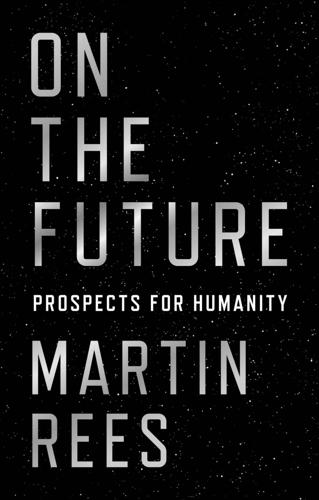
On the Future: Prospects for Humanity
by
Martin J. Rees
Published 14 Oct 2018
But this prompts the question: could there be a separate class of extreme events that would be ‘curtains’ for us all—catastrophes that could snuff out all humanity or even all life? Physicists working on the Manhattan Project during World War II raised these kinds of Promethean concerns. Could we be absolutely sure that a nuclear explosion wouldn’t ignite all the world’s atmosphere or oceans? Before the 1945 Trinity Test of the first atomic bomb in New Mexico, Edward Teller and two colleagues addressed this issue in a calculation that was (much later) published by the Los Alamos Laboratory; they convinced themselves that there was a large safety factor. And luckily, they were right. We now know for certain that a single nuclear weapon, devastating though it is, cannot trigger a nuclear chain reaction that would utterly destroy the Earth or its atmosphere.

The Innovators: How a Group of Inventors, Hackers, Geniuses and Geeks Created the Digital Revolution
by
Walter Isaacson
Published 6 Oct 2014
Von Neumann was successful in this. The plutonium implosion design would result in the first detonation of an atomic device, the Trinity test, in July 1945 near Alamogordo, New Mexico, and it would be used for the bomb that was dropped on Nagasaki on August 9, 1945, three days after the uranium bomb was used on Hiroshima. With his hatred of both the Nazis and the Russian-backed communists, von Neumann became a vocal proponent of atomic weaponry. He attended the Trinity test, as well as later tests on Bikini Atoll in the Pacific, and he argued that a thousand radiation deaths was an acceptable price to pay for the United States attaining a nuclear advantage.
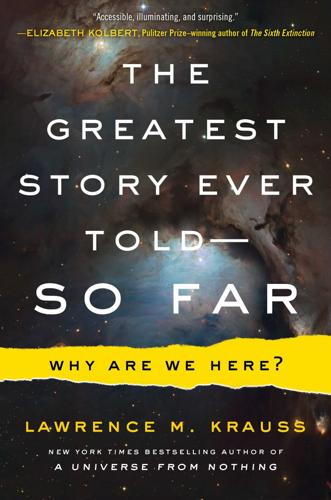
The Greatest Story Ever Told--So Far
by
Lawrence M. Krauss
Published 21 Mar 2017
While those in charge were understandably worried about doing this in an urban area, Fermi was confident enough to convince the leader of the project to allow him to build it at the University of Chicago. On December 2, 1942, the reactor went critical, and Chicago survived. Two and a half years later, Fermi was on hand in New Mexico to observe the first nuclear explosion, the Trinity test. Typical of Fermi, while the others stood in awe and horror, he conducted an impromptu experiment to estimate the bomb’s strength by dropping several strips of paper when the blast wave came by, to see how far they were carried. Fermi’s constant experimental approach to physics is one of the reasons I cherish his memory.
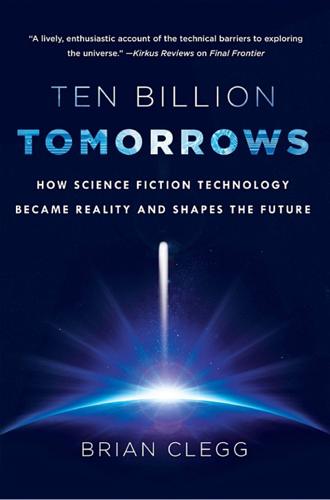
Ten Billion Tomorrows: How Science Fiction Technology Became Reality and Shapes the Future
by
Brian Clegg
Published 8 Dec 2015
In the next year Leo Szilard came up with the concept of a nuclear chain reaction that would make harnessing nuclear power possible; in 1942 Enrico Fermi produced the first working reactor under the bleachers of a disused football stadium in Chicago. Just three years later, on July 16, 1945, the first atomic bomb was exploded in the Trinity test. Realistically, the remarkable success Wells had does not require a time machine or clairvoyance. He combined some powerful insights with just getting lucky, as occasionally people must. When we look across the broad sweep of science fiction, far more of what is portrayed, if considered a prediction, came to nothing.
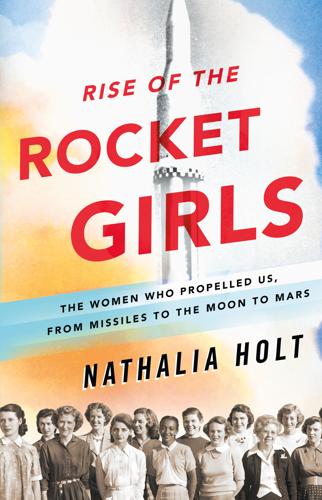
Rise of the Rocket Girls: The Women Who Propelled Us, From Missiles to the Moon to Mars
by
Nathalia Holt
Published 4 Apr 2016
The description of the White Sands Proving Ground obtained from personal interviews and correspondence. A description of the antics that occurred there can be found in M. G. Lord, Astro Turf: The Private Life of Rocket Science (New York: Walker, 2006). The physical beauty of the site and its use in the Trinity test are noted in Rose Houk and Michael Collier, White Sands National Monument (Tucson, AZ: Western National Parks Association, 1994). The January 1949 snowstorm is described in Stephen B. Johnson, “In 1949, the Snowman Socked Los Angeles,” Los Angeles Times, January 11, 2013. Results of Corporal and Bumper WAC tests are documented in the official government report, James W.
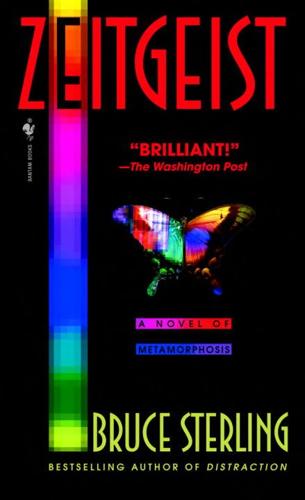
Zeitgeist
by
Bruce Sterling
Published 1 Nov 2000
For eight incredible minutes you get to walk around with your sunglasses on in the shock wave, saying all this heavy, supermythical narrative crap like ‘I am brighter than a thousand suns, I am become Death the destroyer of worlds.’ … But when your eight minutes is up, then all you’ve got is trash. Trash by definition, okay?” Starlitz gazed into his daughter’s candid eyes: he was doing his best to level with her; it was the time for it. “Let’s go back to the story of the Trinity test shot. Well, first you’ve got this silent flash that lights the mountains. Then, a gigantic shock wave. Then a huge boiling egg, a phoenix that rises up into the sky, and then, the desert wind slowly pulls the mushroom cloud apart.… But then … after the heat dies down … you got four federal guys, in hats and suspenders and uniforms, standing around these melted, screwed-up pieces of reinforcement rod.

Late Bloomers: The Power of Patience in a World Obsessed With Early Achievement
by
Rich Karlgaard
Published 15 Apr 2019
Conant, in particular, became convinced that IQ testing was crucial for America’s national defense. In 1940 he was appointed to the National Defense Research Committee. He became the NDRC’s chairman in 1941 and presided over the Manhattan Project, which developed the atomic bomb in 1945. Conant even attended the Trinity test in Alamogordo, New Mexico, on July 16, 1945, where he witnessed the atomic bomb’s first detonation. Unlike Carl Brigham, the SAT’s anti-Semitic inventor, Conant saw that Jewish refugees from Nazism had been indispensable contributors to the Manhattan Project’s success. Hitler’s virulent anti-Semitism and Nazi policies had driven some of Germany’s top physicists out of the country and into the hands of the Americans.
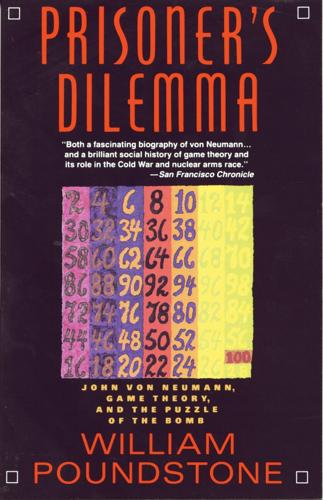
Prisoner's Dilemma: John Von Neumann, Game Theory, and the Puzzle of the Bomb
by
William Poundstone
Published 2 Jan 1993
“I’ll knock the shit out of them before they get off the ground,” LeMay boasted. When Sprague and Weisner objected that first use of nuclear weapons was not national policy, LeMay said, “No, it’s not national policy. But it’s my policy.” 1. There is some confusion about this figure. It appears to refer to the one exploded at the Trinity Test in New Mexico and the one dropped on Nagasaki. It does not count the Hiroshima bomb, which apparently wasn’t done at the time. If that is so, the United States may have had no atomic weapons at all immediately after Nagasaki. The Department of Energy’s historian told Rosenberg that the figure for 1945 may have referred to the end of the calendar year (December 31). 8 GAME THEORY AND ITS DISCONTENTS Slowly the original group of game theorists at RAND broke up.
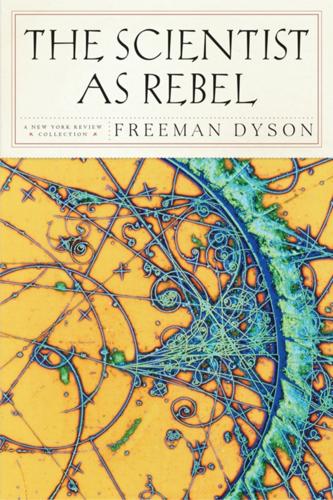
The Scientist as Rebel
by
Freeman Dyson
Published 1 Jan 2006
Robert forwarded the memorandum to General Groves, with a covering letter to show which side he himself was on: “I agree completely with all the comments of Captain Parsons’ memorandum on the fallacy of regarding a controlled test as the culmination of the work of this laboratory. The laboratory is operating under a directive to produce weapons: this directive has been and will be rigorously adhered to.” So vanished the possibility that there might have been a pause for reflection between the Trinity test and Hiroshima. Captain Parsons, acting in the best tradition of old-fashioned military leadership, armed the Hiroshima bomb himself and flew with it to Japan. In later years I found a key to the character of Robert by comparing him with Lawrence of Arabia. Lawrence was in many ways like Robert, a scholar who came to greatness through war, a charismatic leader, and a gifted writer, who failed to readjust happily to peacetime existence after the war, and was accused with some justice of occasional untruthfulness.

The Physics of Wall Street: A Brief History of Predicting the Unpredictable
by
James Owen Weatherall
Published 2 Jan 2013
His kid brother, Frank, was also a physicist — and when the elder Oppenheimer took over work on the bomb, Frank pitched in, first at Lawrence Berkeley lab in California, and then at Oak Ridge in Tennessee, before finally joining his brother in New Mexico. Eight years younger than his famous brother, Frank arrived at Los Alamos just in time to help coordinate the Trinity test, the world’s first nuclear detonation, which was staged in the middle of the Tularosa Basin in New Mexico on July 16, 1945. After the war, Robert appeared on the covers of Time and Life. He was the public spokesman for Cold War science in the United States, and for military restraint regarding the use of the nuclear technology he had helped develop.

User Friendly: How the Hidden Rules of Design Are Changing the Way We Live, Work & Play
by
Cliff Kuang
and
Robert Fabricant
Published 7 Nov 2019
Alan Cooper, the eminent user-experience designer who came up with the idea of user personas, has called this the Oppenheimer moment for product design.27 Oppenheimer had helped birth the atomic bomb so that the United States might end World War II. But once he saw the first mushroom cloud at the Trinity test, he realized that the intent behind what he’d created was irrelevant in the face of how people used that creation. “Today, we, the tech practitioners, those who design, develop, and deploy technology, are having our own Oppenheimer moments,” Cooper once told a crowd of user-experience designers working in a field he himself had helped invent.
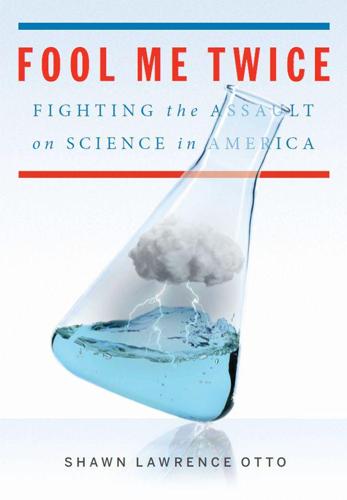
Fool Me Twice: Fighting the Assault on Science in America
by
Shawn Lawrence Otto
Published 10 Oct 2011
And just at that instant there rose from the bowels of the earth a light not of this world, the light of many suns in one.8 There was a sense that scientists had unlocked a power whose use crossed an ethical boundary, and that this act had somehow soiled science and might even destroy humanity. Oppenheimer, the poet physicist, who thought of a verse from the Bhagavad Gita upon seeing the first atomic detonation at Trinity test site in New Mexico—”I am become death, the destroyer of worlds”9—spoke of his growing misgivings at the American Philosophical Society in November. We have made a thing, a most terrible weapon, that has altered abruptly and profoundly the nature of the world. We have made a thing that by all [the] standards of the world we grew up in is an evil thing.
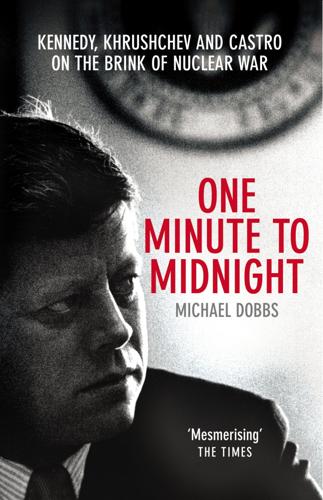
One Minute to Midnight: Kennedy, Khrushchev and Castro on the Brink of Nuclear War
by
Michael Dobbs
Published 3 Sep 2008
Polaris, sugar Summerland Key Sun Tzu surface-to-air missiles, see SAMs Sverdlovsk Sweden Sylvester, Arthur Szulc, Tad T-29 prop aircraft T-54 tanks Tactical Air Command tactical nuclear weapons in Cuba see also FKR (frontovaya krylataya raketa front-line winged rocket) cruise missiles Lunas Tampa, Fla., phantom missile attack on Tarará beach (Red beach) in invasion plans TASS Tatyanas (gravity bombs) Taylor, Maxwell at ExComm meetings JCS briefed by T branch technological revolution television Castro's use of JFK's use of Security Council debate on Telstar Texas, thermonuclear bombs "Thirteen Days," use of phrase Thirteen Days (R. F. Kennedy) Thompson, Llewellyn Thor missiles 341st Strategic Missile Wing Thule Trinidad Trinity test Troitsky, Major Trollope, Anthony "Trollope ploy," Troyanovsky, Oleg Tu-95 "Bear" heavy bombers Tuchman, Barbara Turkey Jupiter missiles in MRBMs in nuclear safety in risk of Soviet attack on U.S. defense agreement with U.S. withdrawal of missiles in see also Cuba-Turkey swap Turks and Caicos Islands Tutino, Saverio 2857th Test Squadron U-2 flights CIA vs.
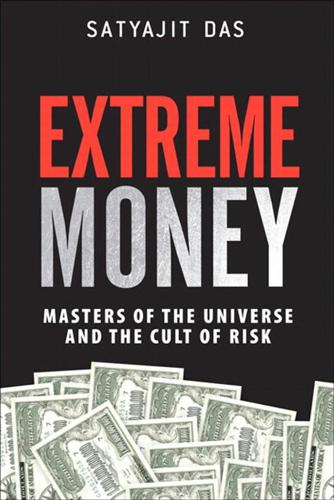
Extreme Money: Masters of the Universe and the Cult of Risk
by
Satyajit Das
Published 14 Oct 2011
Money was the oil lubricating the economy. Now the oil was leaking out via a large crack, and the moving parts were seizing up. In Indian mythology, Brahma is the creator of the world. In his next incarnation or avatar as Vishnu, the preserver, he sustains the world. In his final transformation, Vishnu becomes Shiva. At the Trinity test site, watching the power released by the explosion of the world’s first atomic bomb, Robert Oppenheimer resorted to the sacred text of the Bhagavad Gita: “I am become Death, Shiva, destroyer of worlds.”5 Money had created and preserved modern economies. Now, it unleashed its destructive power, ironically by its absence.

Atomic Accidents: A History of Nuclear Meltdowns and Disasters: From the Ozark Mountains to Fukushima
by
James Mahaffey
Published 15 Feb 2015
Morgan was appalled. Slotin was reassigned to Los Alamos, where daring was better appreciated, in December 1944. He quickly earned respect for a natural ability to assemble the complicated implosion bomb without excessive worrying and hand-wringing. He expertly put together the bomb core for the Trinity test in New Mexico in July 1945. His unofficial title was Chief Armorer of the United States. The only reason he was absent on Tinian Island when the Fat Man was assembled was his lack of U.S. citizenship. Slotin was shocked and saddened when Daghlian, his assistant and fellow dragon tickler, died in the criticality accident, and he spent days at his bedside in the hospital.

Energy and Civilization: A History
by
Vaclav Smil
Published 11 May 2017
Farben) Nylon (Wallace Carothers) 1936 Regular TV broadcasting (BBC) Gas turbine (Brown-Boveri) 1937 Fully pressurized aircraft (Lockheed XC-35) 1938 Prototype jet fighter (Hans Pabst von Ohain) 1939 Radar (UK) World War II (until 1945): Blitzkrieg 1940s Military jet aircraft Electronic computers 1940 Helicopter (Igor Sikorsky) 1942 V-1 rockets (Wernher von Braun) Industrial production of silicone Controlled chain reaction (Enrico Fermi, Chicago) 1944 V-2 rockets DDT marketed 1945 Nuclear bombs (Trinity test, Hiroshima and Nagasaki) Electronic computer (ENIAC, United States) First herbicide (2,4-D) marketed 1947 Transistor (J. Bardeen, W. H. Brattan and W. B. Shockley) Offshore drilling out of sight of land (Louisiana) Piloted flight faster than speed of sound (Bell X-1) 1948 Basic-oxygen steelmaking furnace (Linz-Donawitz) The world’s largest oil field (Saudi al-Ghawar) discovered 1949 First passenger jet aircraft (De Havilland Comet) 1950s Rapidly growing worldwide crude oil consumption Continuous steel casting Electrostatic precipitators spread Commercial computers Stereo recordings Videotape recorders 1951 Automatic engine assembly (Ford Company) Transmission of color TV images Hydrogen (fusion) bomb 1952 British Comet jetliner in commercial service 1953 Microwave oven (Raytheon Manufacturing Company) 1954 U.S.
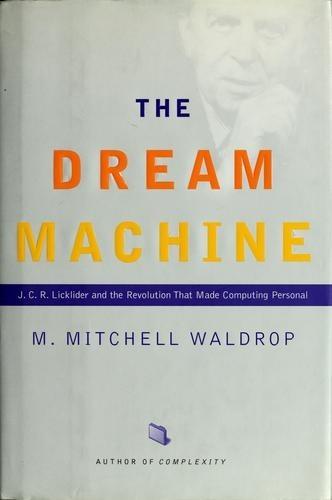
The Dream Machine: J.C.R. Licklider and the Revolution That Made Computing Personal
by
M. Mitchell Waldrop
Published 14 Apr 2001
To this day, the vast majority of computers in the world-including essentially all personal computers-are still based on the serial, step-by-step "von Neumann" architecture. Von Neumann mailed off his handwritten manuscript to Goldstine at the Moore School in late June 1945. He may well have felt rushed at that point, since the Trinity test of the plutonium bomb was less than three weeks away (it would take place on July 16). But in any case, he left numerous blank spaces for names, references, and other information that he planned to insert after his col- leagues had had a chance to comment. Presumably he intended that the final version of the report would give explicit credit to the originators of its key ideas-which in many cases meant Mauchly and Eckert.
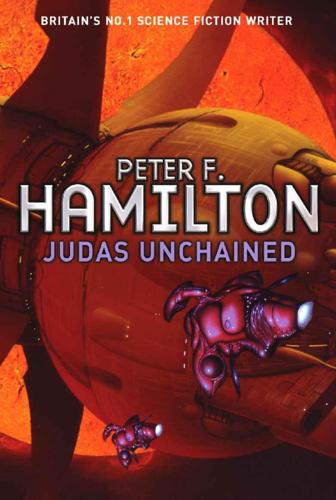
Judas Unchained
by
Peter F. Hamilton
Published 1 Jan 2006
Their ion rockets pushed them into a bracelet formation orbiting the nameless moon, allowing them to cover the entire surface simultaneously. Once their coverage was established they’d be able to determine the exact power of the quantumbuster they were here to test. ‘So far so good,’ he muttered. ‘Absolutely. Here’s hoping we don’t have a Fermi moment.’ ‘A what?’ Mac really didn’t like the uncertainty in her voice. ‘During the Trinity test of the very first atom bomb, Fermi wondered if the detonation would ignite the Earth’s atmosphere. They just didn’t know, you see. We think the quantum disruption won’t propagate. If it does, then the whole universe gets converted into energy.’ ‘Oh great, thanks for sharing.’ He gave the doomed moon a deeply troubled glance.
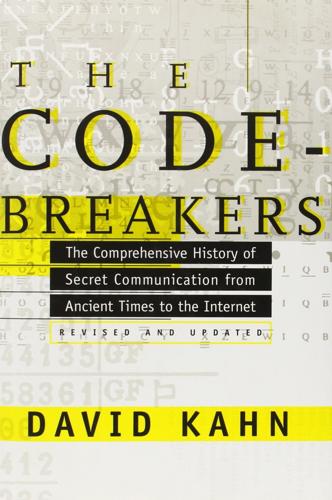
The Codebreakers: The Comprehensive History of Secret Communication From Ancient Times to the Internet
by
David Kahn
Published 1 Feb 1963
The LITTLE BOY in his message referred, not to the uranium bomb, but to the plutonium bomb just detonated; his BIG BROTHER referred to the uranium bomb that all Manhattan District people now felt confident would explode. DOCTOR harkened back to a previous telegram, in which Groves was referred to as a physician and the TRINITY test as an operation. Harrison’s message read: DOCTOR HAS JUST RETURNED MOST ENTHUSIASTIC AND CONFIDENT THAT THE LITTLE BOY IS AS HUSKY AS HIS BIG BROTHER. THE LIGHT IN HIS EYES DISCERNIBLE FROM HERE TO HIGHHOLD AND I COULD HAVE HEARD HIS SCREAMS FROM HERE TO MY FARM. Stimson understood it all without trouble and interpreted it to President Harry S Truman.